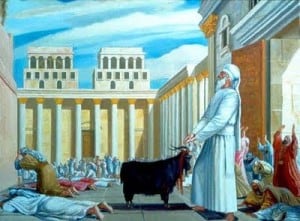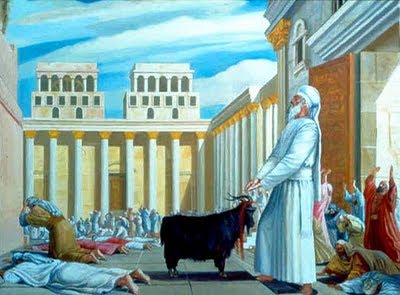Parshat Vayikra ( Leviticus 1:1-5:26) – What does Leviticus teach us about the power of sacrifices and what secrets can we glean regarding standing before Hashem in prayer?
Overview And Study Guide for Parshat Vayikra
HaShem calls to Moshe to enter the tent of meeting.
 Throughout the Torah text we see G-d telling Moshe what to say to the people. Yet at the burning bush on Sinai and here, G-d calls him forward.Why did G-d do so at the burning bush and why does He do it here?
Throughout the Torah text we see G-d telling Moshe what to say to the people. Yet at the burning bush on Sinai and here, G-d calls him forward.Why did G-d do so at the burning bush and why does He do it here?
HaShem then transmits to Moshe the laws of the sacrifices called korbanot in Hebrew. What can be learned of the true purpose of these sacrifices by their Hebrew name?
These animal and meal offerings include:
- The Olah or the “ascending offering” that is completely consumed and dedicated totally to G-d on the Altar;
- the fine flour “meal” offering, the Shlamim or peace offering ,the sin offerings and the Asham or guilt offerings;
- The Mincha or “meal offering” is prepared with fine flour, olive oil and frankincense.
Why cannot honey and yeast be added to this offering ?
The “peace offering” is shared by the one bringing the offering, the altar and the Kohanim or the priests.
How is this connected to the offering’s purpose ?
What type of sins are the Chatat offered for ? What then could be used for other types of sins ?
Listen to this week’s Podcast:
